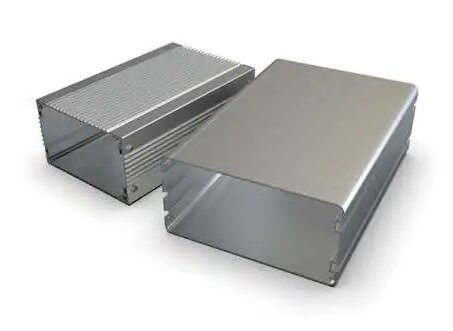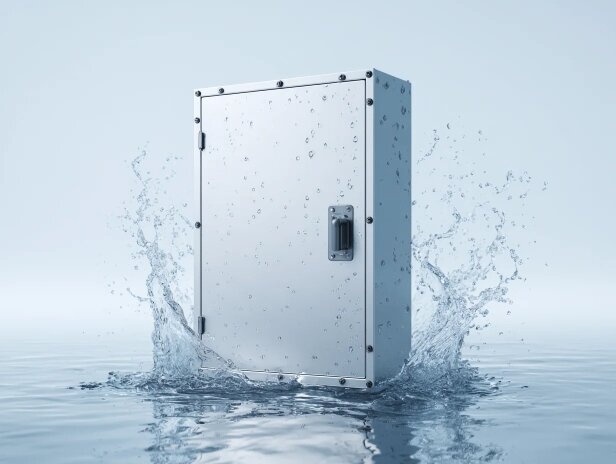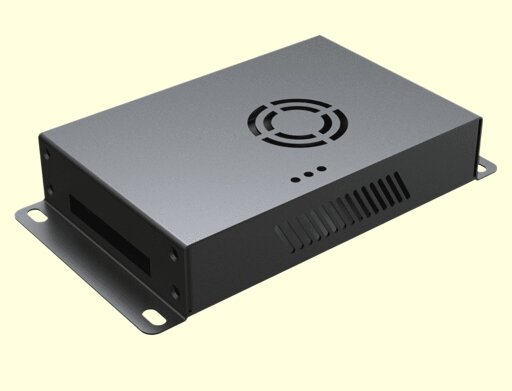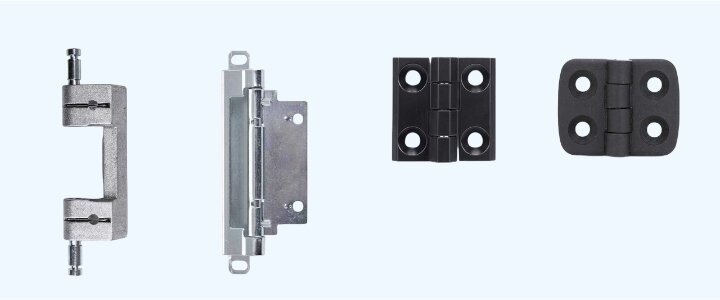Многие инженеры и руководители цехов сталкиваются с такими проблемами, как неровная форма резьбы или необходимость в специальных размерах резьбы. Еще сложнее, когда стандартные инструменты не могут решить проблему. Но научиться использовать одноточечное нарезание резьбы может помочь. Это дает вам больше контроля над процессом. Вы можете нарезать резьбу в точном соответствии с вашими потребностями.
Нарезание резьбы в одной точке дает возможность нарезать нестандартную резьбу, корректировать профиль и точно соблюдать спецификации. Это руководство описывает процесс, объясняет, как он работает, и рассказывает о лучших практиках.
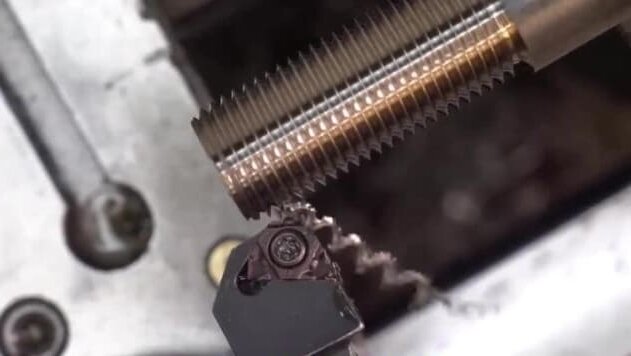
Что такое одноточечная резьба?
Нарезание резьбы в одной точке - это метод, при котором для создания резьбы на заготовке используется режущий инструмент. При этом используется один инструмент, имеющий форму профиля резьбы. Когда деталь вращается на токарном станке, инструмент перемещается по ней и нарезает резьбу. Нарезание происходит медленно и поэтапно.
Этот метод является стандартным как для ручных токарных станков, так и для Токарные станки с ЧПУ. С его помощью можно нарезать резьбу на внешней или внутренней стороне детали. Одно из его главных преимуществ - контроль. Вы можете выбрать размер, форму и шаг резьбы в соответствии с вашим проектом.
При этом инструмент не перерезает всю нить за один проход. Он делает несколько проходов. С каждым проходом инструмент проникает немного глубже. Так продолжается до тех пор, пока резьба не достигнет окончательной глубины. Это отличается от метчиков или плашек, которые нарезают резьбу за один проход.
Нарезание резьбы в одной точке также отличается гибкостью. Вы можете легко изменить размер или форму резьбы. Это делает ее отличным вариантом для изготовления деталей на заказ, ремонтных работ или небольших партий. Она хорошо подходит, когда вам нужна специальная резьба или плотная посадка. Кроме того, она позволяет лучше контролировать качество и точность.
Типы создаваемых нитей
Нарезание резьбы в одной точке позволяет создавать множество типов резьбы. Она подходит для нестандартных спецификаций или когда нужно соответствовать определенным стандартам резьбы. В этом разделе мы расскажем об этом подробнее.
Внутренняя и внешняя резьба
Наружная резьба нарезается на внешней стороне детали, например на болтах или валах. Резьбонарезной инструмент перемещается по внешнему диаметру вращающейся заготовки - инструмент постепенно врезается, пока не будет достигнута полная форма резьбы.
Внутренняя резьба нарезается внутри отверстий, например, в гайках или корпусах. Для этого требуется инструмент меньшего размера с тем же профилем. Это сложнее, поскольку инструмент работает внутри отверстия, что ограничивает пространство и видимость.
Оба типа требуют тщательного выравнивания и контроля глубины. Ошибки в настройке или траектории движения инструмента могут повлиять на посадку или прочность резьбы.
Стандарты общей нити
В разных отраслях промышленности используются различные стандарты резьбы. Нарезание резьбы в одной точке дает возможность нарезать практически любую из них, если инструмент и станок настроены правильно.
Метрическая резьба
Метрическая резьба широко используется во всем мире. Они измеряются в миллиметрах. Основными величинами являются основной диаметр и шаг - расстояние между витками.
Например, M10 × 1,5 означает, что резьба имеет основной диаметр 10 мм и шаг 1,5 мм. Метрическая резьба соответствует стандартам ISO, что обеспечивает ее единообразие у разных поставщиков.
Унифицированный стандарт резьбы (UTS)
Система UTS распространена в Соединенных Штатах. В ней вместо миллиметров используются дюймы. Шаг часто указывается как резьба на дюйм (TPI).
Например, резьба 1/4-20 UNC означает диаметр 1/4 дюйма и 20 витков на дюйм. UNC означает унифицированную крупную резьбу. Существуют также UNF (мелкая) и UNEF (особо мелкая).
Каждый стандарт имеет свои правила для шага, угла и глубины. Инструмент для нарезания резьбы должен точно соответствовать форме и размеру.
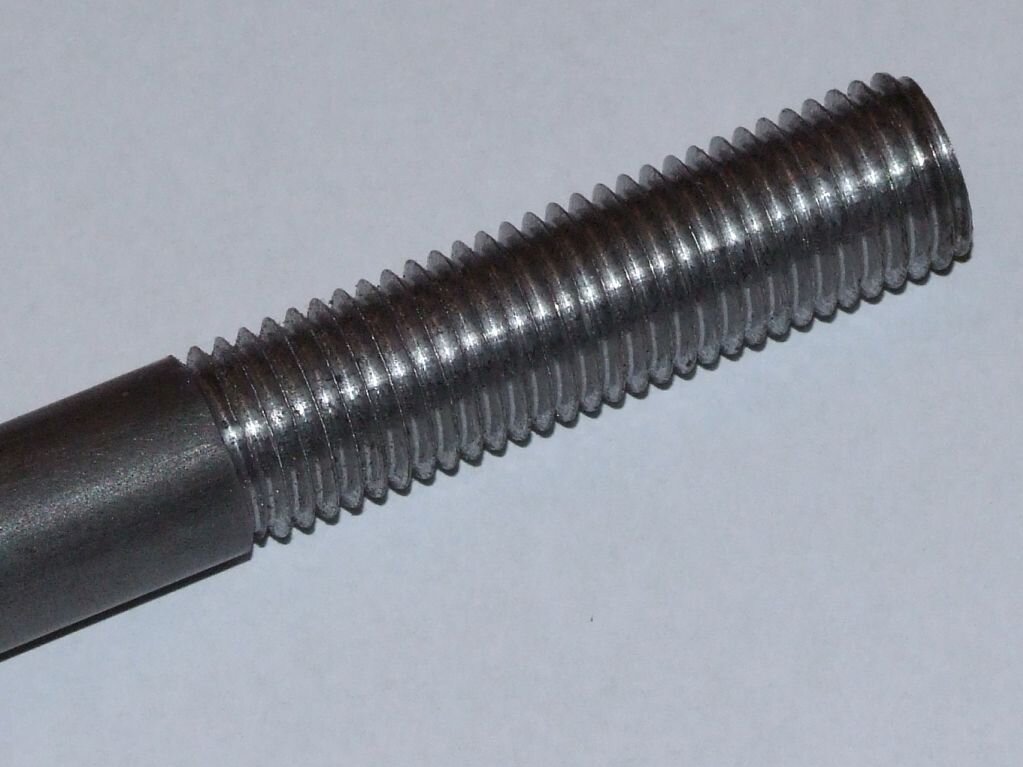
Инструменты и оборудование для нарезания резьбы в одной точке
Для нарезания резьбы в одной точке вам понадобятся соответствующие станки и режущие инструменты. Настройка зависит от типа резьбы, материала и того, насколько точным должен быть результат.
Токарные станки и их роль
Нарезание резьбы в одной точке всегда происходит на токарном станке. Токарный станок вращает заготовку, а режущий инструмент движется по прямой линии вдоль нее. Это совместное движение создает резьбу.
В ручных токарных станках используется ведущий винт и шестерни для подбора шага резьбы. Оператор устанавливает шестерни или набирает нужную скорость подачи. Токарные станки с ЧПУ делают это автоматически с помощью запрограммированных настроек. Они быстрее и более воспроизводимы.
Виды резьбонарезных инструментов
Резьбонарезной инструмент выполняет нарезку. Он имеет острую кромку, соответствующую форме резьбы. К наиболее распространенным типам относятся:
- Инструменты из быстрорежущей стали (HSS): Хорошо подходит для небольших работ и мягких материалов. Их можно шлифовать в различных формах.
- Твердосплавные вставки: Используются для более твердых материалов или длительных работ. Они служат дольше и обеспечивают более качественную обработку поверхности.
- Расточные стержни: Используются для нарезания внутренней резьбы. Они устанавливаются внутрь отверстий и по форме напоминают резьбонарезные инструменты.
Геометрия инструмента и типы вставок
Резьбонарезные инструменты имеют определенную форму, называемую геометрией. К основным особенностям относятся:
- Профиль резьбы: Соответствует форме резьбы. Например, 60° V-образная форма для метрической резьбы или резьбы UNC.
- Радиус носа: Небольшой закругленный наконечник, регулирующий форму гребня резьбы. Слишком острый может привести к сколам, слишком круглый - к размытию деталей.
- Угол рельефа: Предотвращает трение инструмента о материал во время резки.
Пошаговый процесс нарезания резьбы в одной точке
Нарезание резьбы требует тщательной настройки и уверенного контроля. Следуйте этой последовательности, чтобы избежать ошибок и повреждения инструмента.
Шаг 1: Подготовьте заготовку и станок
Начните с проверки размера и материала заготовки. Убедитесь, что она круглая, чистая и надежно зажата в патроне. Если деталь шатается, резьба не будет точной.
Очистите токарный станок и проверьте зазор между инструментами. Удалите стружку и настройте станок на нужную скорость. Используйте более низкие обороты, чем при обычной токарной обработке.
Шаг 2: Выберите правильные параметры резьбы
Определите шаг, диаметр и форму резьбы. Они зависят от чертежа или конструкции детали. Убедитесь, что ваш инструмент соответствует профилю резьбы.
Установите скорость подачи в соответствии с шагом резьбы. Например, при шаге 1,5 мм инструмент должен перемещаться на 1,5 мм за один оборот шпинделя.
При использовании токарного станка с ЧПУ введите в программу все параметры резьбы. Дважды проверьте код на точность.
Шаг 3: Установка и выравнивание инструмента
Установите резьбонарезной инструмент в держатель. Режущая кромка должна быть обращена к детали под прямым углом и находиться на высоте центра. С помощью центрального калибра выровняйте инструмент под правильным углом, обычно 60° для большинства резьб.
Убедитесь, что инструмент плотно закреплен. Любое движение повлияет на форму резьбы.
Шаг 4: Установите нулевую отметку
Подведите инструмент вплотную к заготовке. Коснитесь поверхности и установите нулевую точку по оси X. Затем немного отступите и установите начальную точку оси Z.
Эта отметка указывает машине, с чего начинать каждый проход. Если ноль не равен нулю, глубина и положение нити не будут соответствовать спецификации.
При ручной работе используйте резьбовой циферблат или метод синхронизации. На станке с ЧПУ убедитесь, что траектория движения инструмента начинается в правильном месте.
Шаг 5: Выполните первый проход резьбы
Запустите токарный станок и включите подачу. Инструмент должен прорезать неглубокую канавку, следуя шагу резьбы. Следите за плавностью движения и чистотой резания.
Используйте небольшую глубину резания, чтобы избежать перегрузки инструмента. Остановите машину после первого прохода и проверьте форму резьбы.
Убедитесь в правильности шага и формы резьбы с помощью калибра или микроскопа.
Шаг 6: Повторите проходы резки с регулировкой глубины
Продолжайте резать, делая все более глубокие проходы. Уменьшайте глубину каждый раз по мере приближения нити к окончательному размеру. Это уменьшает силу резания и сохраняет поверхность гладкой.
Нанесите смазочно-охлаждающую жидкость, чтобы снизить нагрев и увеличить срок службы инструмента. Следите за скоплением стружки и при необходимости регулируйте скорость или подачу.
Остановитесь и проверьте посадку после нескольких проходов. Используйте резьбовые манометры или контрольные детали. Остановитесь, когда резьба достигнет нужной глубины и посадки.
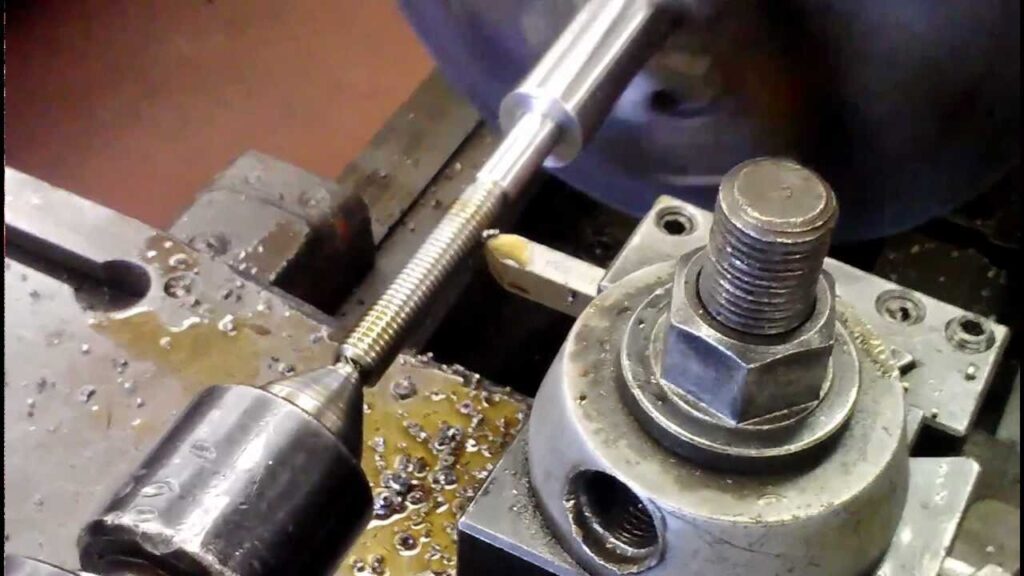
Преимущества одноточечной резьбы
Одноточечное резьбонарезание по-прежнему широко используется, поскольку оно обеспечивает лучший контроль и гибкость. Вот почему в условиях реальной мастерской это надежный выбор.
Точность и аккуратность
Этот метод позволяет контролировать размер и форму резьбы. Вы можете задать шаг, глубину и форму прямо на станке. Он хорошо подходит для деталей, требующих жестких допусков. Вы можете нарезать резьбу, проверить ее и внести небольшие изменения, пока она не будет соответствовать требованиям.
Работает со многими типами резьбы
С помощью одноточечного резьбонарезателя можно нарезать резьбу практически любого типа. Она обрабатывает метрическую, унифицированную, ACME, трапециевидную и даже нестандартные формы. Вам понадобится инструмент правильной формы и настройки станка.
Низкая стоимость для небольших партий
Если вам нужно всего несколько деталей, этот метод поможет сэкономить деньги. Не нужно покупать специальные метчики или плашки. Можно использовать один и тот же режущий инструмент и регулировать настройки станка.
Лучшие практики для достижения оптимальных результатов
Для получения чистой и точной резьбы требуется не только правильная настройка. Чтобы инструмент, деталь и станок работали слаженно, нужны хорошие привычки во время резки.
Избегайте уклонения и болтовни
Прогиб возникает, когда инструмент или заготовка изгибаются под давлением. Это приводит к неровной резьбе или износу инструмента. Чтобы избежать этого, держите инструмент на небольшом выступе и используйте жесткую установку.
Болтанка - это вибрация, оставляющая следы на поверхности резьбы. При возникновении болтанки используйте более низкие скорости и уменьшайте глубину прохода. Убедитесь, что инструмент острый и хорошо закреплен.
При необходимости используйте заднюю бабку или устойчивый упор для поддержки длинных деталей. Это поможет сохранить устойчивость заготовки во время резки.
Управление образованием и удалением сколов
При нарезании резьбы образуются длинные нитевидные стружки, которые могут намотаться на деталь или инструмент. Они могут повредить резьбу или сломать инструмент.
Используйте стружколомы на инструменте или уменьшите глубину резания, чтобы разбить стружку на мелкие кусочки. Нанесите смазочно-охлаждающую жидкость, чтобы уменьшить нагрев и улучшить отвод стружки.
При необходимости делайте паузы между проходами для очистки от стружки вручную. На станках с ЧПУ добавьте движение втягивания и выдержки, чтобы дать стружке сойти перед следующим проходом.
Обеспечение правильного зазора и угла наклона инструмента
Инструмент должен иметь достаточный зазор для чистого резания без затирания. Проверьте углы бокового и торцевого рельефа. Если они слишком малы, инструмент будет перетягиваться и перегреваться.
Подберите угол наклона в зависимости от материала. Положительный угол наклона помогает снизить силу резания при работе с более мягкими металлами. Нейтральный угол наклона лучше подходит для более твердых металлов.
Всегда выравнивайте инструмент под правильным углом к заготовке. Даже небольшой наклон может повлиять на форму резьбы и вызвать проблемы с установкой. Используйте манометры или индикаторы для проверки перед резкой.
Применение в различных отраслях промышленности
Одноточечная резьба используется во многих областях, где требуются точность, гибкость и надежность. Вот как различные отрасли используют ее на практике.
Автоматизированная индустрия
В автомобильной промышленности нарезание резьбы в одной точке часто используется для производства резьбовых валов, болтов, компонентов двигателя и фитингов. Многие из этих деталей требуют жестких допусков и нестандартных спецификаций. Она также помогает модифицировать существующие детали или изготавливать компоненты обратной конструкции.
Аэрокосмическая техника
Для деталей аэрокосмической промышленности часто требуются жесткие допуски и специальные формы резьбы. Нарезание резьбы в одной точке обеспечивает контроль, необходимый для решения этих задач. Она обычно используется для изготовления прецизионный крепежРезьбовые втулки и фитинги, которые используются в авиационных системах.
Общая обработка
Мастерские и небольшие производственные предприятия полагаются на одноточечное нарезание резьбы для повседневных деталей. Будь то корпуса на заказЭтот метод надежен при изготовлении коротких партий деталей или сменных винтов. Он позволяет полностью контролировать глубину, шаг и форму резьбы, особенно на экзотических материалах, таких как титан или инконель.
Сравнение одноточечной резьбы с другими методами
Вот краткое сравнение одноточечной резьбы и других стандартных методов нарезания резьбы. Используйте эту таблицу, чтобы быстро решить, какой метод соответствует требованиям вашей детали и производственным потребностям.
| Особенность | Одноточечная резьба | Нажатие | Фрезерование резьбы | Нарезание резьбы |
|---|---|---|---|---|
| Тип резьбы | Внутренние и внешние | Только для внутреннего пользования | Внутренние и внешние | Только внешние |
| Гибкость (пользовательские нити) | Высокий | Низкий | Высокий | Низкий |
| Скорость | Медленный | Быстрый | От среднего до быстрого | Быстрый |
| Сложность установки | Умеренный | Низкий | Высокий | Низкий |
| Точность | Высокий | Умеренный | Высокий | От низкого до умеренного |
| Срок службы инструмента | Длинные (твердосплавная вставка) | Короче (особенно на твердых материалах) | Длинный | Короткие |
| Диапазон материалов | Широкий (металлы, пластмассы и т.д.) | Ограничено прочностью крана | Широкий | Ограниченное |
| Лучшее для | Прототипы, нестандартные детали, плотное прилегание | Стандартные отверстия, большой объем | Сложные детали, ремонт резьбы | Простые работы, стандартная внешняя резьба |
Заключение
Нарезание резьбы в одной точке - это точный и гибкий способ нарезания как внутренней, так и внешней резьбы. Она хорошо подходит для нестандартных размеров, небольших партий и жестких допусков. По сравнению с нарезанием, фрезерованием резьбы и нарезанием плашкой, этот способ позволяет лучше контролировать форму и глубину резьбы. При правильной настройке и оснастке можно получить чистую и точную резьбу в широком диапазоне материалов.
Вам нужны нестандартные резьбовые детали или поддержка прецизионной обработки? Свяжитесь с нашей командой сегодня и давайте обсудим ваш следующий проект.
Привет, я Кевин Ли

Последние 10 лет я занимался различными формами изготовления листового металла и делился здесь интересными идеями из своего опыта работы в различных мастерских.
Связаться

Кевин Ли
У меня более десяти лет профессионального опыта в производстве листового металла, специализирующегося на лазерной резке, гибке, сварке и методах обработки поверхности. Как технический директор Shengen, я стремлюсь решать сложные производственные задачи и внедрять инновации и качество в каждом проекте.

